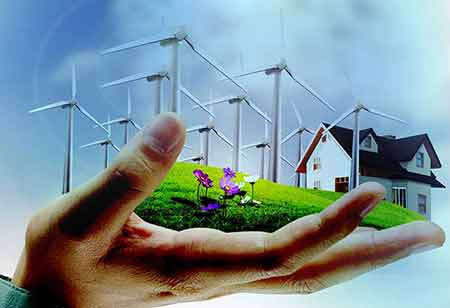Thank you for Subscribing to Energy Business Review Weekly Brief
Overcoming Obstacles in Offshore Wind Power Transmission
Obtaining cables is one of the first obstacles offshore wind projects must overcome.

By
Energy Business Review | Wednesday, January 12, 2022
Stay ahead of the industry with exclusive feature stories on the top companies, expert insights and the latest news delivered straight to your inbox. Subscribe today.
The procurement, routing, and protection of offshore wind cables are crucial for delivering energy to the grid. Similarly, environmental stewardship is essential.
FREMONT, CA: The global energy shift is transforming the world's power infrastructure and affecting how electricity is generated and distributed. This transition includes the development of offshore wind power, which has led to an explosion of offshore wind projects worldwide. Offshore wind energy projects are complicated. They involve modern technologies and specialist maritime logistics. Additionally, they demand significant engineering and environmental skills. One of the most prevalent difficulties related to offshore wind installations is how to most efficiently transport the ever-increasing amount of offshore wind energy into the grid. Submarine export cables transport the electricity to land to supply it to end customers.
Check Out This: Top Logistics Tech Startups
Constraints on the export cable manufacturing supply chain
Obtaining cables is one of the first obstacles offshore wind projects must overcome. Most of the world's cable producers are operating at total capacity due to the considerable rise in demand for undersea cables. It now takes longer to acquire and deploy offshore submarine cable infrastructure. Increased demand may also cause cable makers to be more selective in the projects for which they submit bids. It can lead to fewer competitive bids and increased prices. Therefore, it is essential to engage cable vendors sooner in the project's life cycle than previously. It alerts providers to the unique project and initiates an important information flow, benefiting the cable suppliers and the project owner. It facilitates the communication of project schedules and production restrictions, enabling both parties to collaborate and conclude the project.
The export cables are routed to an onshore connecting point
Finding the optimal route for transmission lines is crucial. It would be optimum to immediately transport the cables from offshore wind farms directly to shore and connect them to the electricity grid. However, this is not practicable due to limitations in the ocean, such as marine protected areas, underwater canyons, and places with heavy shipping activity. Additionally, the architecture of the onshore electrical transmission system is considered. It may not be prepared to accept offshore wind power in busy shore sites.






